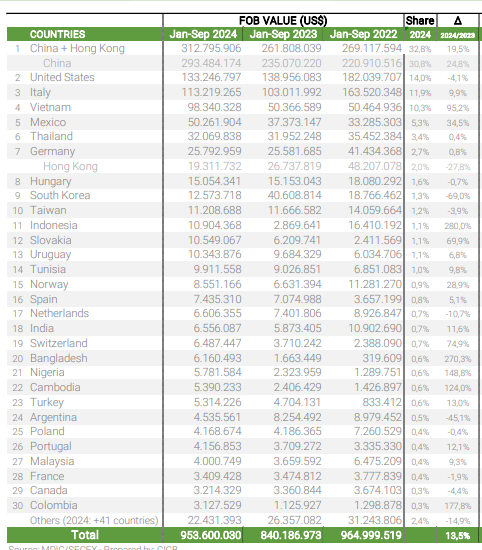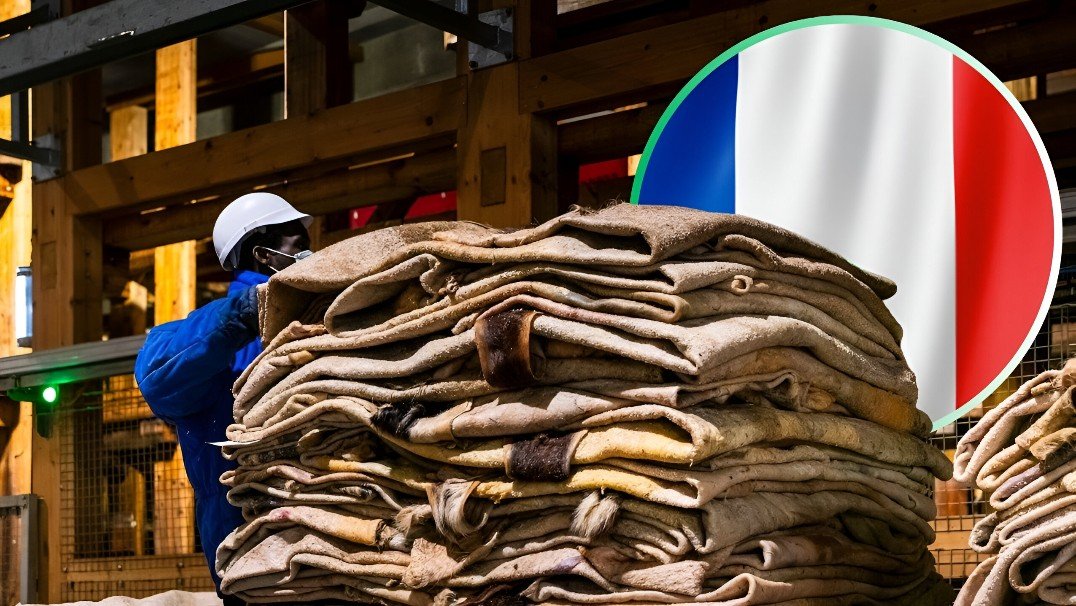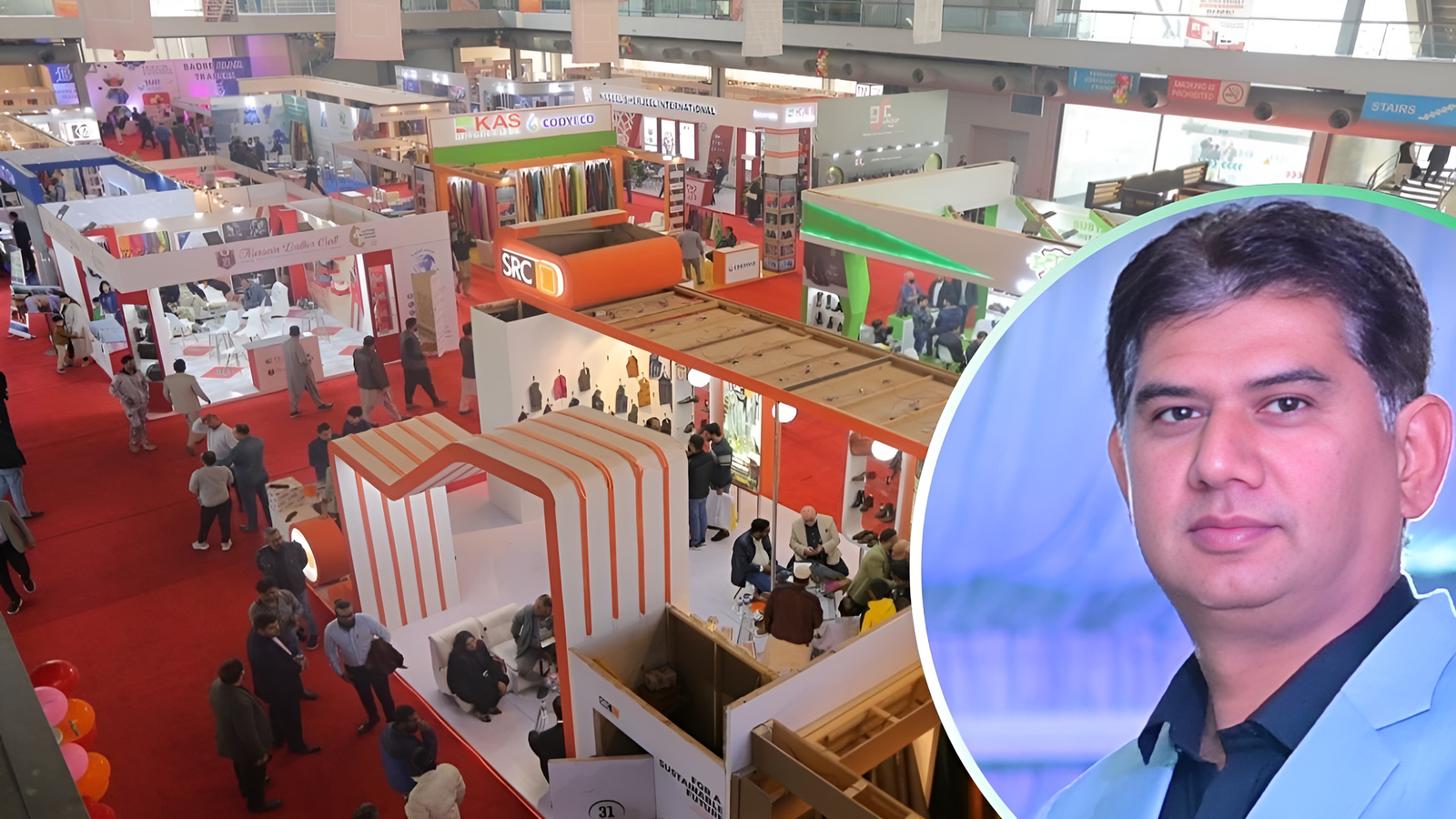Brazil’s export market for hides and skins experienced a significant recovery in September 2024, marking a robust period for the industry following a weak performance in August.
The Brazilian Center for the Leather Industry (CICB), alongside data from the Secretariat of Foreign Trade (SECEX), revealed that exports in both volume and value demonstrated a strong uptick.
Notable Growth in Export Volume and Value

In September, Brazil exported 15.9 million square meters and 52.6 thousand tons of hides and skins, representing an 18.1% increase in area and a 44.1% increase in weight compared to the same month in 2023.
These figures also reflect month-over-month growth from August, showing a 22.2% increase in area and 37.2% increase in weight.
Year-to-date data for the period from January to September 2024 shows Brazil’s exports reaching a total value of US$ 953.6 million, a 13.5% increase over the same period in 2023.
The volume of exported goods also saw significant growth, with 21.7% more area and 38.0% more weight shipped compared to the previous year.
September’s Financial Performance
Brazil’s export value for hides and skins in September 2024 reached US$ 102.1 million, a 15.5% increase over August and an 11.6% increase compared to September 2023.
The corresponding value last year stood at US$ 91.5 million, underscoring the industry’s recovery despite ongoing global economic uncertainties.
Key Export Destinations

The United States, Italy, and China remain Brazil’s top destinations for hide and skin exports.
In September, exports to the United States accounted for 14.0% of the total value and 7.1% of the area, showing slight declines of 4.1% in value and 3.1% in area.
Italy, on the other hand, increased its share to 11.9% in value and 13.5% in area, marking a 9.9% rise in value and an 8.8% rise in area.
China, Brazil’s largest buyer, maintained its strong presence, accounting for 30.8% of export value and 41.0% of the area.
These numbers reflect increases of 24.8% in value and 29.7% in area compared to the previous year.
Meanwhile, Vietnam demonstrated significant growth, with a 95.2% rise in export value and a 99.7% increase in area.
Conversely, South Korea and Hong Kong showed declines in both value and area, with South Korea experiencing a sharp drop of 69.0% in value and 69.2% in area.
Leather Types: A Focus on Wet Blue and Finished Leather

Brazilian exports of wet blue leather saw a significant resurgence in September 2024. With over 7 million square meters shipped, it marked the second-largest volume for the year.
In terms of value, wet blue leather exports rose by 36.6% compared to the same period in 2023, with an increase of 35.5% in area.
This leather type continues to be a substantial driver of Brazil’s overall export growth, representing 29.5% of the total export value and 53.4% of the export area for the year-to-date.
Meanwhile, finished leather, which represents 46.0% of the total export value and 36.1% of the export area, experienced a modest decrease in value but saw a 3.4% increase in area compared to the previous year.
Salted hides also showed strong performance, with shipments in September 2024 tripling those of the same month in 2023.
State-by-State Export Analysis

Among Brazil’s states, Rio Grande do Sul and Paraná continue to dominate leather exports.
However, the real standout was Mato Grosso do Sul, which saw a 70.5% increase in export value, closely followed by Minas Gerais with a 68.0% increase.
Bahia also reported a 52.5% rise in export value.
While most states in the Top 10 demonstrated growth, Santa Catarina, Ceará, and Paraná faced slight declines in value, with Santa Catarina experiencing the largest drop at 6.3%. However, Paraná showed a minor reduction in area, down by 2.4%, while other states continued to expand.
In conclusion, September 2024 was a pivotal month for Brazilian hides and skins exports, with significant improvements in both value and volume. After a sluggish August, the industry rebounded strongly, driven by increased demand from key markets like the United States, Italy, and China. Wet blue leather, in particular, saw a remarkable surge in shipments, signaling a broader recovery for Brazil’s leather industry. Despite global challenges, including geopolitical uncertainties, the future outlook for Brazilian exports remains positive as the country solidifies its position as a leading player in the global leather market.
Check out the report by brazilianleather.cicb.org.br here
You might also like to read












